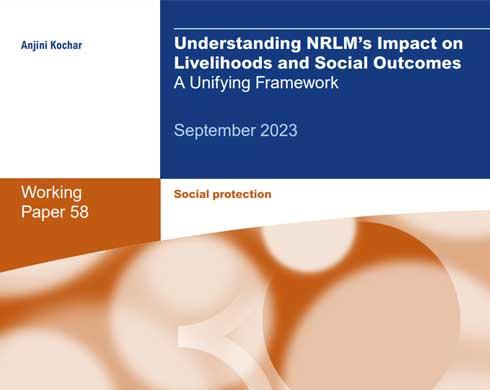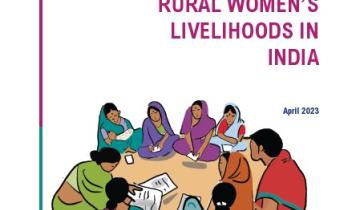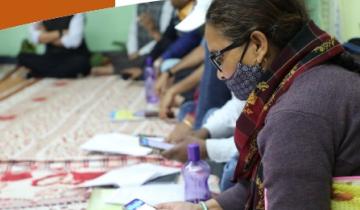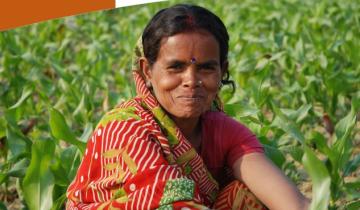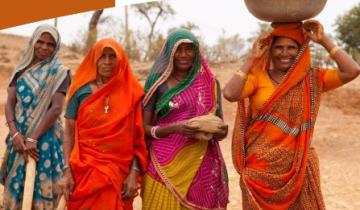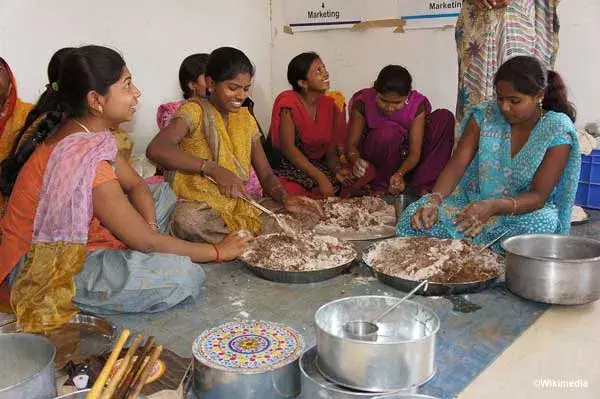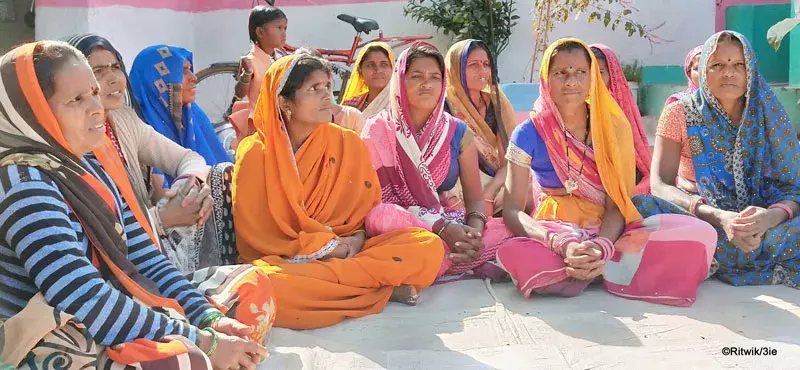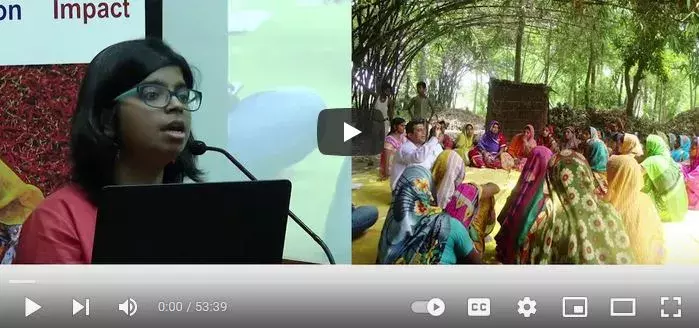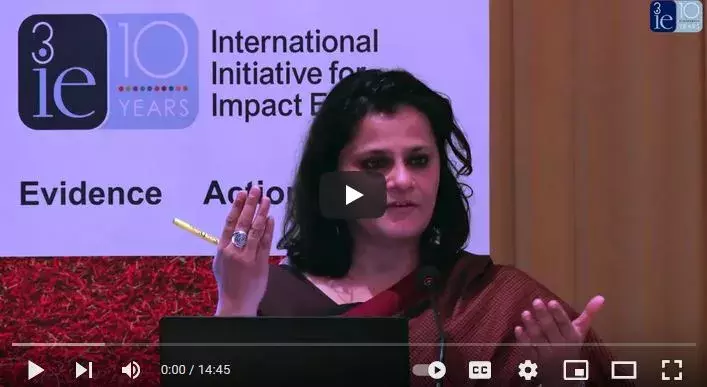Rural India Livelihoods Project
Launched in 2011, India’s Deendayal Antyodaya Yojana-National Rural Livelihoods Mission (DAY-NRLM) links the rural poor to sustainable livelihood opportunities and financial services. In collaboration with the Ministry of Rural Development, Gates Foundation and World Bank, 3ie has been generating rigorous evidence on the impacts of this large-scale program on livelihood promotion and social mobilization. A major focus of our research has been understanding the program’s impact on women’s income, assets and decision-making.
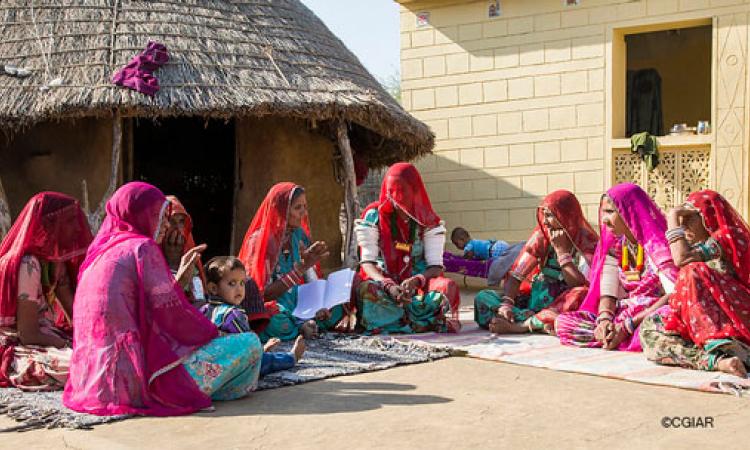
Overview
The DAY-NRLM is one of India’s flagship programs under the Ministry of Rural Development to reduce poverty and promote inclusive growth, with a special focus on socially and economically disadvantaged groups. The program has invested in building the capacity of self-help groups (SHGs) to self-govern and engage in sustainable economic activities. By federating SHGs within and across villages, NRLM aims to ensure more cost-effective delivery of government services and amplify the collective voice of rural communities.
3ie evaluations
3ie collaborated with theIn 2019, 3ie conducted its first evaluation of the DAY-NRLM after surveying more than 25000 households in across nine states in India. The research findings have since informed the design and execution of several aspects of this program. The program has continued to evolve and introduce several new interventions through its institutional platforms built on community federations.
In the second phase of evidence generation, 3ie is generating evidence in partnership with Vrutti on the overall impact of DAY-NRLM and of a subset of pilots conducted under the program. We are generating learnings on pathways, contextual factors and other elements that mediate policy impact. A major focus of this work is on household and individual level outcomes, specifically the income of women and their share of household assets, consumption, and other measures of welfare.
Read more about the two phases of our evaluation and the related insights:
Impact
Sharing insights at the Indian Agriculture Ministry’s Post Budget Webinar series
On 1 March 2025, 3ie’s Dr Anjini Kochar and Neelakshi Mann participated in a Post Budget Webinar on Building Rural Prosperity and Resilience organized by the Ministry of Agriculture and Farmers Welfare and the Ministry of Rural Development, India. The discussion focused on ensuring an inclusive and sustainable rural development strategy. Drawing on 3ie's research for the Indian Ministry of Rural Development, Dr Kochar spoke about the importance of the National Rural Livelihoods Mission for rural prosperity and resilience in the country. The panel brought together expert stakeholders from the public and private sector, academia, industry and practitioners working on implementation strategies across sectors.
Informing discussions in the Indian Parliament
In September 2020, India’s then–minister of rural development, Narendra Singh Tomar, cited the 3ie evaluation and shared study findings in response to a question from a lawmaker in the Upper House of the Indian Parliament (Rajya Sabha). The lawmaker’s questions pertained to the details and impacts of funding provided to SHGs under the DAY-NRLM and came weeks after the researchers shared evaluation findings with ministry officials. In July 2021, India’s new rural development minister, Giriraj Singh, mentioned the 3ie study and outlined its key findings in the Rajya Sabha in response to a question on SHG loans and results of studies on the impact of the DAY-NRLM. In December 2022, the union minister of state for rural development, Sadhvi Niranjan Jyoti, cited the 3ie study findings in a written response to a question on the loan repayment rate by SHGs in the Rajya Sabha. In December 2024, the minister of state for rural development, Dr. Chandra Sekhar Pemmasani, cited the 3ie study findings in a written response to a question in the Lok Sabha.
Informing the next phases of the program
Preliminary findings and engagements also informed the World Bank, which provides funding and technical support to the government of India’s livelihoods program. World Bank’s documents highlighted the findings, particularly on the importance of federating the SHGs, as informing the next phases of the DAY-NRLM and the World Bank–supported National Rural Economic Transformation Project.
Contributing to the evidence base on economic inclusion programs at scale
Findings from the 3ie evaluation were cited in The State of the Economic Inclusion Report 2021: The Potential to Scale commissioned by the World Bank and the Partnership for Economic Inclusion. This report presents data and evidence from 219 programs in 75 countries that are reaching over 90 million beneficiaries. This report moves forward key debates on program impact and costs, which are central to the sustainability of economic inclusion programs at scale. 3ie engaged with the World Bank, which was part of the 3ie impact evaluation advisory group, throughout the research cycle and jointly shared learning on the role of women’s collectives and community institutions in rural transformation at a 3ie conference in January 2021.
ECWG draws on 3ie’s evidence and gap analysis
The 3ie evidence gap map on group-based interventions has been cited heavily by Evidence Consortium on Women’s Groups (ECWG) to inform their learning agenda and portfolio evaluation of the Gates Foundation’s investments in South Asia and Africa.
Research
In partnership with the University of California, Berkeley, Yale University and Vrutti Livelihoods Resources Centre, 3ie is producing thematic papers using the data collected for the NRLM evaluation.
- Understanding caste-based differences in self help groups: Evidence from India’s NRLM program
- Improving delivery and impacts of pro-poor programs
- The policies that empower women: empirical evidence from India’s National Rural Livelihoods Project
Journal article | Report | Brief - Women’s economic status and son preference: empirical evidence from private school enrolment in India
- Understanding India’s self-help groups: an organizational anatomy of functionality in a district in Madhya Pradesh
A full list of publications is available in the Related content section below.
News
- This Ideas for India article, co-authored by Dr Anjini Kochar, evaluates whether self-help group (SHG) program in Bihar has improved risk-sharing by examining differences in village-level variance of consumption growth. (read in Hindi)
- In this Ideas for India article, Anjini Kochar, C. S. Nagabhusana, Ritwik Sarkar, Rohan Shah, Geeta Singh talk about how financial access impacts women’s decision-making role in households.
- In this Ideas for India article, Chandan Jain, Krishna Kejriwal, Ritwik Sarkar and Pooja Sengupta analyze caste-based differences in self-help groups within the NRLM program.
- This Indian Express article recaps a discussion on 'Women Collectives, Changemakers from the ground up' in which Dr Anjini Kochar spoke about financial inclusion. The panel discussion was held as part of the IE THINC Third edition.
- In this Hindustan Times article, Dr Anjini Kochar examines the reasons behind the low and declining labour force participation rate of women in India.
- In this Hindustan Times article, Dr Anjini Kochar explains the persistence for son preference, particularly in private school enrolments in rural India.
- In a recent IndiaSpend article on the impact of COVID on women's collectives, Dr Bidisha Barooah talks about what needs to change in the existing program design.
- A new issue brief on ten years of the NRLM published by the Observer Research Foundation, cites 3ie’s evaluation and other work on self-help groups.
- An IndiaSpend article contextualizes 3ie's evaluation evidence and explores how NRLM, in particular women's SHGs, boost household income.
- In this Indian Express article, 3ie staff write about the barriers to effective implementation of farmer-producer companies.
- In an article for the Financial Express, Dr Anjini Kochar explains how the NRLM can help transform women's lives.
Other activities | We also collaborated with JEEVikA (Bihar Livelihoods Mission) on a management information system of a sanitation program and conducted some formative research to inform the implementation of Project Mesha, a community-based program for goat rearing. For queries about this work, please write to info@3ieimpact.org
Additional reading | Compiled list of World Bank resources on rural growth

